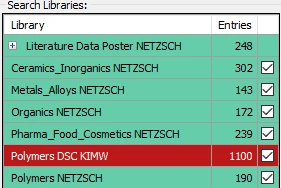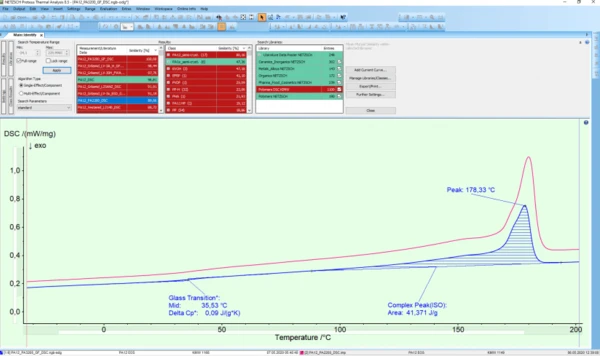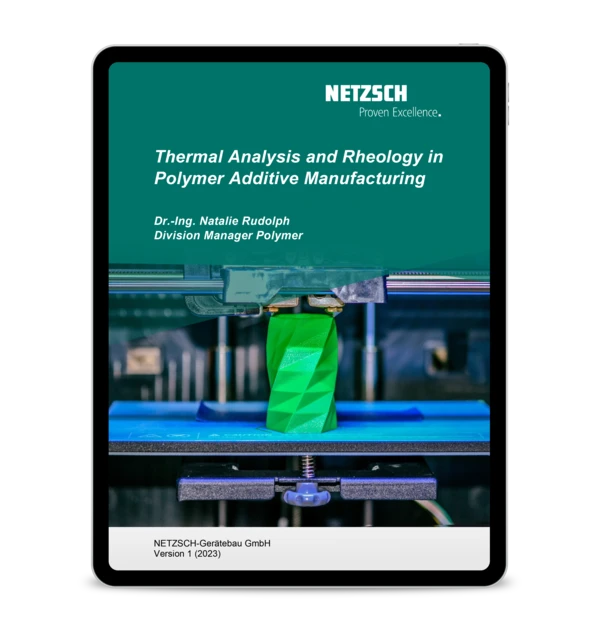
22.03.2021 by Dr. Natalie Rudolph, Dr. Alexander Schindler
New: Additive Manufacturing Materials in Identify
The Identify software is one of a kind in the field of Thermal Analysis. Via database comparisons, it only takes a second for Identify to identify and classify your samples. We have added Additive Manufacturing materials to our database! Read more in the article!
With a single click, measured curves (even ones that are not yet evaluated) can be compared with the currently existing entries in the database. These come from measurements, literature data or classes. The NETZSCH libraries supplied include about 1300 entries from the application fields of polymers, organics, food, pharma, metals/alloys, ceramics and inorganics, as well as the chemical elements.
Now for the first time, we have added polymers used in Additive Manufacturing or 3D printing to the KIMW database on DSC curves of polymers with already 1100 database entries, Figure 1. You can now compare your own measurements on powders, filaments or UV curable resins with the Identify database entries.

Identify helps you:
- Identify materials
- Perform your Quality Control (QC)
- Archive and Search your own measurements as well as the existing database AND
- Look up suitable measurement conditions on similar materials
When using Identify, just one click is needed to create a hit list, which can be displayed together with evaluation graphs. For comparison reasons, different database curves can be superimposed.
Example of PA12 powder
The following example shows the measured DSC curve on a PA12 powder with 30 vol% glass fibers (blue) as well as the curve of a standard PA12 powder without reinforcement (pink) found in the database. Using the “Standard Search” parameters, a 90% agreement was found between the two as can be seen in Figure 2. The significant difference comes from the enthalpy (Complex Peak (ISO)).

Given the almost identical sample weight used for both, it can be confirmed that the reduction in enthalpy by about 30% is due to the glass fiber content in the blue sample.
By switching from “Standard” to “Qualitative”, which only considers characteristic temperatures and peak shapes as search parameters, the agreement between the two curves is close to 99 %.
This means both powders can likely be processed with similar temperature settings. However, due to the glass fiber content, the setting of the laser system during the Additive Manufacturing process should likely be adjusted to account for the reduced energy input needed to melt the glass fiber filled powder.
If you want to learn more about performing DSC measurements on SLS powders, read more here!
To learn more about the Identify database, AutoEvaluation or the KIMW Database of Polymers, read the following article and links therein.

FREE E-Book
Thermal Analysis and Rheology in Polymer Additive Manufacturing
Discover the secrets behind AM's game-changing capabilities! Our newly released ebook delves deep into the heart of AM, unveiling the power of reliable material characterization techniques, specifically thermal analysis and rheology.